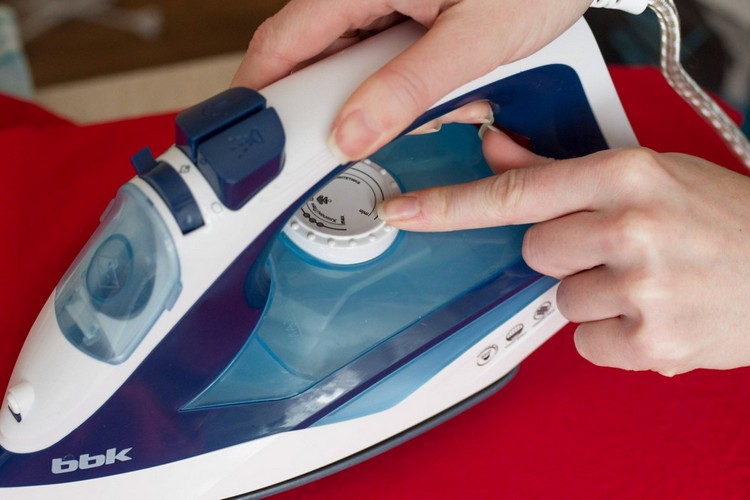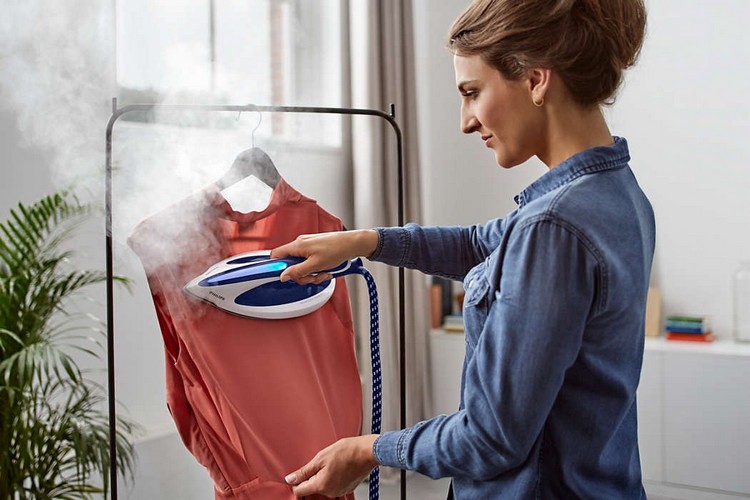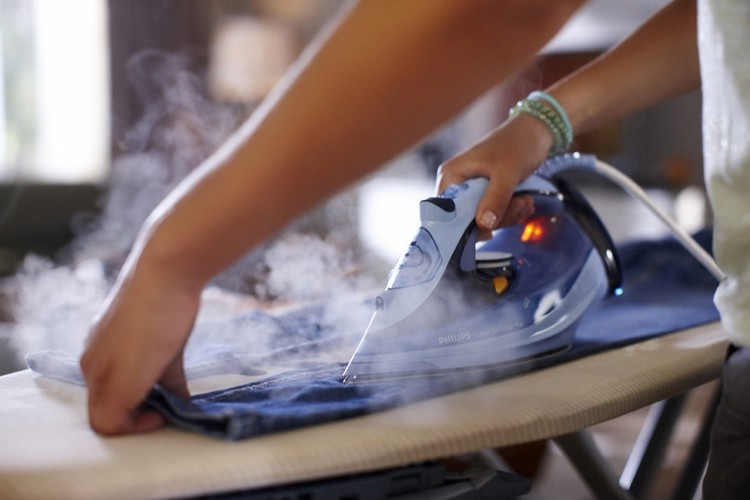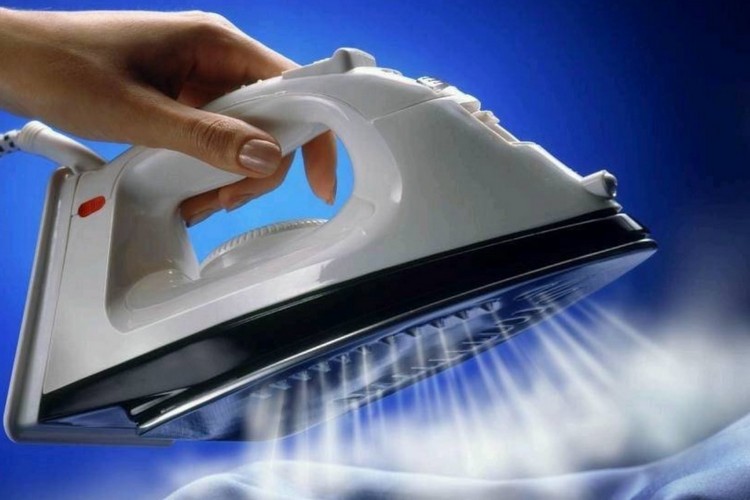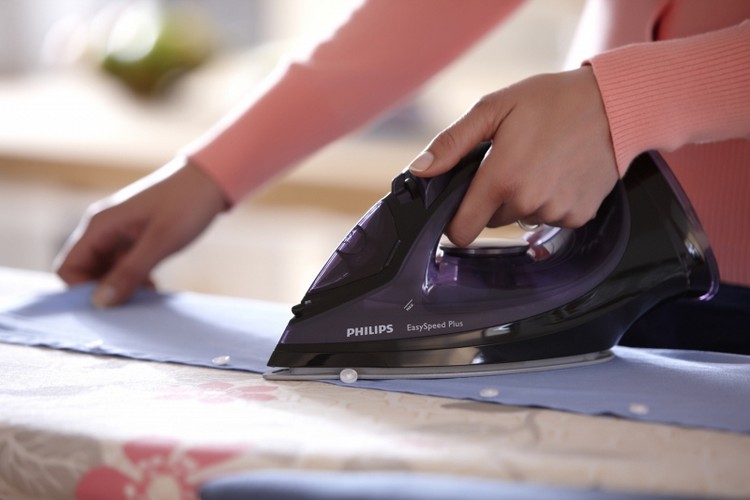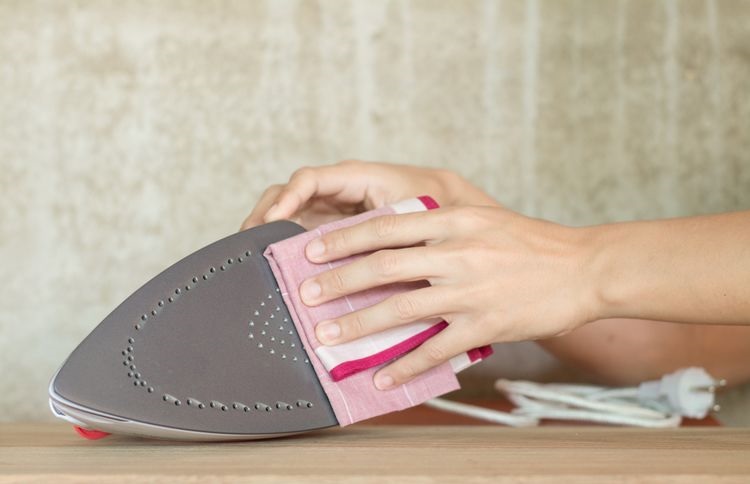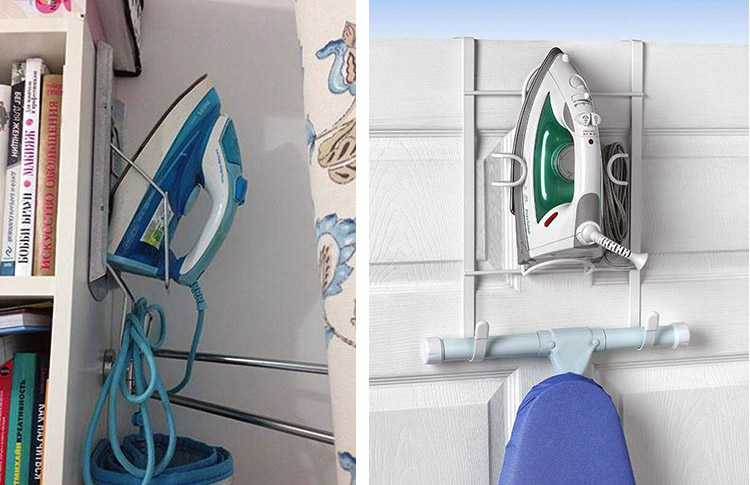The instructions on how to use an iron: steam or regular iron
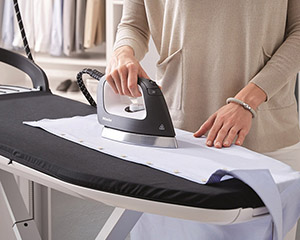 An iron is an indispensable device in every home. With its help, you can give things a neat appearance.
An iron is an indispensable device in every home. With its help, you can give things a neat appearance.
But not everyone knows how to use an iron properly.
Most people think that such a simple device is resistant to all external influences, but it is not. Taking good care of your iron ensures that it will last a long time.
Before using the device, listen to the advice given below.
Contents
How to prepare for ironing
Start by setting your iron on the desired setting.
Each fabric has its own ironing requirements. For example, you need to stop at 100-120 degrees Celsius to iron wool and cotton can be ironed at 140-170 degrees Celsius.
The following materials should be ironed at these temperatures:
- Cotton with polyester - 140-170 degrees Celsius.
- silk 80 degrees.
- Linen 180-200 degrees.
- Viscose - 120 degrees.
- Chintz - 170 degrees.
All figures are maximum temperature values. Deviations of 10-20 degrees below are considered normal.
Next, you should fill the tank with water. This is not available for all models, but if you have the option, do it. Water is needed to steam things better; they will look even better after ironing.
If you have a new iron, never direct the steam jet directly at the laundry, as the steam chamber can get dirty. We recommend pouring water into the compartment first, then releasing the steam jet and start ironing. Usually users have no problem opening the water tank.
Pour liquid only when the device is unplugged. Do not neglect the safety rules.
Experts advise emptying the iron immediately after ironing the cloth and leaving it in an upright position.
Ironing with vertical steaming
All modern irons have a vertical steam function. It aids in smoothing even the finest parts of fabric that do not tolerate the heated soleplate of the device.
It is used for tidying up outerwear, smoothing curtains, as well as for thermal disinfection of fabric, toys, delicate furniture, etc. The scope of application of vertical steaming is almost unlimited.
Using an iron with a vertical steamer is very simple:
- Pour cold water into the reservoir and plug the device into the mains. The device has a special regulator that shows the steam modes. You choose the option you need.
- The liquid begins to heat quickly (a few minutes), after which it evaporates. Steam comes out of small holes on the soleplate. Pressing the button is followed by a steam jet.
- To iron the garment vertically, hang it on hangers or any similar hanger. Pull the fabric with one hand and try to move from top to bottom with the iron in the other hand. You don't have to iron the garment on both sides because the steam penetrates deep enough.
This method is ideal for steaming curtains and delicate fabrics that cannot be ironed any other way.
Some models have different steam modes. They are divided by steam power, as it all depends on the type of fabric. For example, the power when ironing silk should be less than when ironing cotton or wool.
Ironing with continuous steaming
For large amounts of fabric, continuous steam ironing comes in handy. Not all irons can provide this option, as it depends on the size of the tank.
Continuous steaming helps to smooth out the smallest creases. The method is also suitable for things sewn with delicate materials that do not tolerate the touch of a heated soleplate. The method of ironing is used during the processing of curtains, curtains, furniture covers.
In addition to the above, you can apply a special steamer.
There are household and stationary models, divided into manual and floor models. For work in the industrial area should use stationary devices, while for everyday purposes will suit household devices. Hand-held steamer can be taken on a trip (in this case it is better to buy a model with a long cord).
Ironing with a steam blow
This ability is present in almost all models of modern irons.
If you can't smooth out a fine crease, and even high power doesn't help, you can use steam shock. It can be activated by pressing a special button, often located in the middle. Once pressed, a high-pressure jet of steam comes out of the soleplate. Eventually the crease is smoothed out.
Pay attention to the speed of steam delivery, as it significantly affects the result. The most effective speed remains 90-120 g/min.
When compared to the constant steam method, the impact is inconsistent. It takes 20 seconds of "recharge" to create and build up new steam. However, if you own a large model with a steam generator, you don't have to worry about this: your iron delivers steam in large quantities all the time. This is good for big clothes with lots of creases and those that won't be ironed out any other way.
Dry ironing
Dry ironing is the simplest and most common method of ironing fabrics.
It doesn't require special steamers or water tanks. All you have to do is set the temperature and start the process. Keep in mind that each fabric has its own temperature. Follow the manufacturer's instructions.
Hardy fabrics (cotton, linen) can be ironed this way, as well as fabrics that should not be steamed (some types of silk). Delicate materials should be ironed at low temperatures.
There are several criteria which allow this method to be firmly integrated into the everyday life:
- The choice of fabric. Certain fabrics do not tolerate moisture when ironed.
- Faulty fluid reservoir. This problem haunts irons of older models. Fluid starts leaking from the reservoir, dampening the fabric too much. The result is severe deformation of the material. Excess moisture can leave unpleasant streaks that are not easily removed. The use of a broken tank is fraught with further appliance failures.
- Dirty steam. If the device has not been cleaned for a long time, its clogging is possible (especially the steam passages). Once on the thing, the particles get smeared on the clothes, leaving a lot of stains. Of course, it is better to clean the iron as soon as possible on your own or at a specialized company.
Dry ironing is used for the following fabrics:
- Some varieties of silk.
- Chiffon.
- Viscose.
- Lining fabric.
- Satin.
- Capron.
- Nylon.
Precautions.
When using an iron, precautions must be observed. If you do not calculate the temperature, or make a mistake about something, you can completely ruin your clothes and get burns.
Make sure the iron is heated to the correct temperature before use. Do not forget to unplug it when you leave.
Although some models offer a special fuse, it is better to protect yourself.
After 30 seconds in the horizontal position, the energy saving mode is activated and the temperature drops. The fuse is also triggered if the switched on device is 5-10 minutes (depending on the model) in an upright position.
However, it does not save against power failures, such as a sudden power outage. In such cases, the device is at risk of short circuits and defects, which will reduce its functionality in the future.
The higher the wattage of the appliance, the more carefully it should be handled.
Iron care
Cleaning
When your iron is no longer sliding around very well or is dirty on your ironed clothes, you need to clean it. As you use it, the soleplate gets dirty and a layer of lime begins to cover all the holes.
To properly descale and clean your iron, you need to remove particles that interfere with the normal functioning of the device.
To properly clean your iron, follow these steps:
- First, unplug the iron before working with it.
- Wait for the soleplate to cool or warm up before cleaning.
- For an iron whose soleplate is coated with Teflon, do not use an abrasive sponge.
- Only use a well wrung out cloth or a perfectly dry sponge.
What should I use to clean it?
Only use chemical solutions of good quality to ensure the best cleaning results. Do not use too aggressive a detergent to avoid corrosion.
Vinegar, citric acid and baking soda (as an abrasive) can be used as household solutions. However, baking soda is not recommended for cleaning Teflon coatings.
Fine salt is used to remove rust, and stains on Teflon surfaces can be removed with vinegar. Also among the modern cleaning agents is a special stain remover. It removes stale fibers and dirt from even the nooks and crannies.
A look at the finish
Also, the method of cleaning depends on the type of coating.
There are the following coatings:
- Ceramic (perfectly glides on clothes, easy to clean, but is brittle).
- Aluminum (heats and cools quickly, but leaves a sheen on the fabric).
- Stainless steel (easy to slide, durable, but makes the iron heavy).
- Teflon (non-stick properties and easy to slide, but scratches easily).
- Titanium (perfectly glides, strong and durable).
These are the basic types of soleplate. And, as a rule, most manufacturers use these types, adding special coatings and coatings that make products unique and recognizable.
Teflon coatings, while durable and strong, should not be subjected to mechanical abuse.
Reservoir
After each use, pour the water out of the tank. This prevents the water from stagnating and prevents unpleasant odors.
Storing the iron
Keep your iron upright so as not to put the soleplate at risk. Keep it away from water and direct sunlight. Clean the appliance regularly to keep it functioning properly and wipe it thoroughly after cleaning.
The best place for storage is considered a dresser or drawers out of reach of the weather.
The exact instructions for storing the iron are provided by the manufacturer. Heed it and the universal advice to keep the appliance intact and in good condition.
Additional accessories
In addition to the appliance itself, there are several add-ons for the iron:
- Nozzles.
- Special soles.
- Tools for cleaning the iron's soleplate.
- Regulators for temperature.
- Various fuses.
- Advanced water reservoirs.
- Magnetic valves.
- Individual handles, buttons, light bulbs and soles.
- Cords for wiring and many more parts.
Also, for more convenient use, buy an ironing board. Its design allows you to make the process of ironing things comfortably and economically.
On the side of the board is attached a special antenna to which the wire is attached. This prevents it from getting on the hot surface. The peculiarity of the ironing space is the possibility of height adjustment. This will ensure the reliability and stability of the accessory.
Other accessories for the iron also make the process of using the device more functional and practical. Non-stick coatings, for example, are needed to improve gliding over the fabric. If your iron does not have non-stick features, take a closer look at this accessory.
Using your iron correctly will ensure maximum efficiency, a quality ironing process, and a long shelf life of the device.
Useful Videos
Here is a video which shows how to use the iron with the steam impact function:



